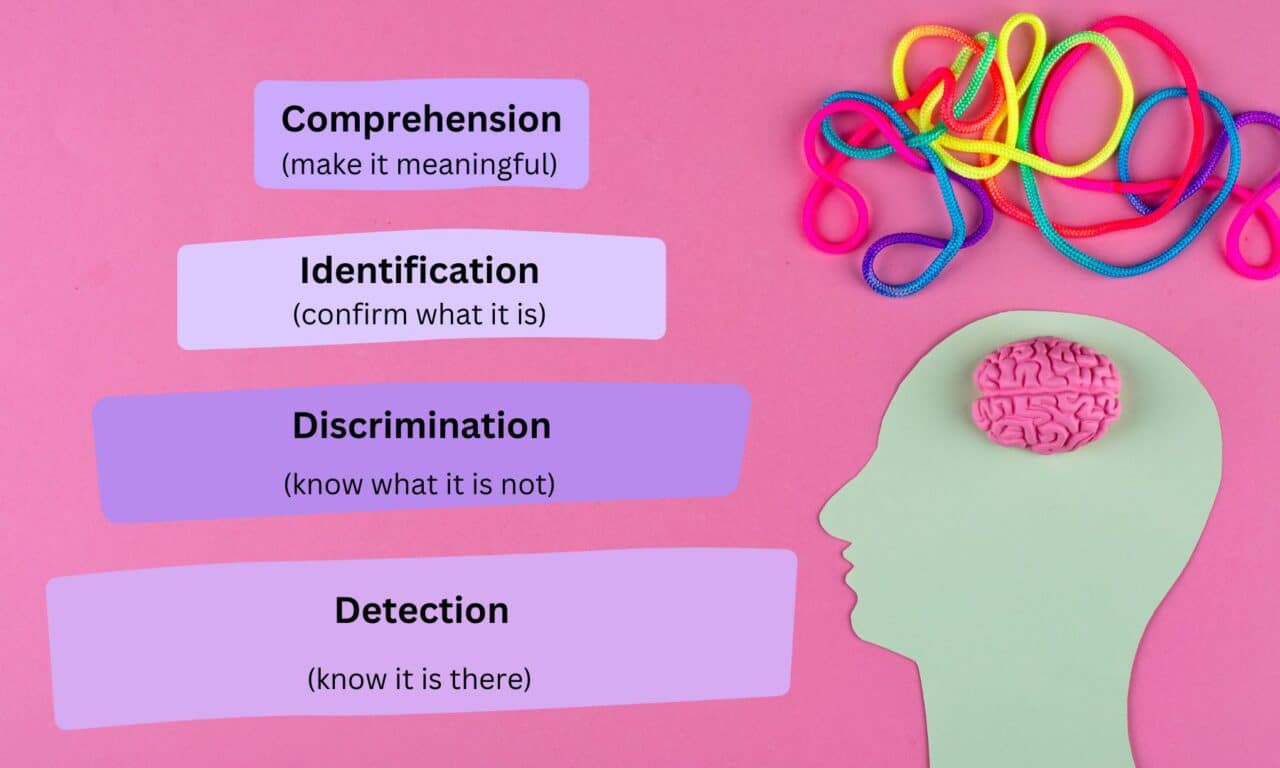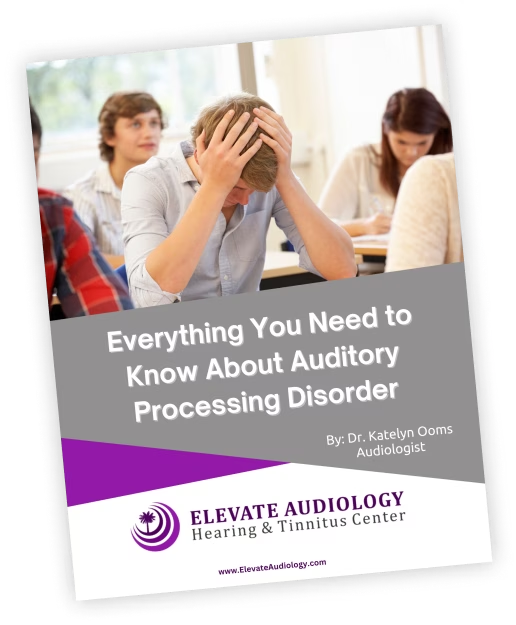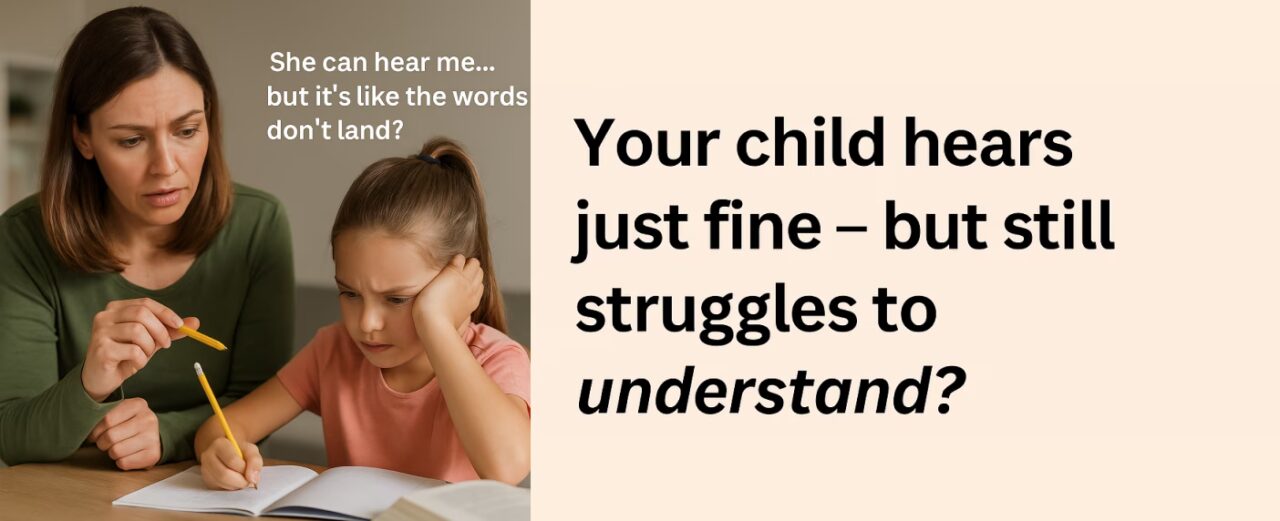Auditory processing refers to the brain’s ability to interpret and make sense of the sounds we hear. It involves recognizing, distinguishing and understanding speech and environmental sounds, even in challenging listening environments. While our ears detect sound, it is the brain that processes and organizes this information, allowing us to follow conversations, detect differences in similar sounds and filter out background noise.
According to Erber’s Hierarchy of Auditory Skills, sound is processed in four ascending levels:

Auditory Processing Disorder (APD) is a condition in which the brain has difficulty interpreting and organizing sounds, even though peripheral hearing (the ability to detect sound) is normal. Individuals with APD can hear sounds, but their brains struggle to process what those sounds mean—particularly in complex or noisy environments.
Auditory processing involves a range of perceptual, cognitive and linguistic functions that allow us to recognize, distinguish and make sense of what we hear. This includes understanding speech, filtering out background noise and remembering auditory information. APD disrupts this process, leading to challenges in everyday communication and learning.
APD affects approximately 20% of school-aged children and up to 43% of those who struggle academically. It also impacts adults of all ages, especially in environments with poor acoustics or high cognitive demands.

Elevate Audiology’s
“Auditory Processing Disorder Guide”
Are you interested in learning more about APD? Request a complimentary copy of our Auditory Processing Disorder Guide by Dr. Katelyn Ooms by filling out the form below.
Signs of APD
Common signs of APD include difficulty understanding speech in background noise, trouble following conversations when multiple people are speaking and frequent requests for repetition. Children may seem inattentive, struggle with reading, spelling or following verbal instructions. Adults often notice these challenges in college, work or social settings, especially when multitasking or processing fast-paced speech.
Other challenges may include:
- Trouble remembering spoken information (e.g., directions or lists)
- Difficulty following complex or multi-step instructions
- Poor localization of sound (knowing where it’s coming from)
- Problems understanding accents or fast/unclear speech
- Delayed responses in conversation
- Challenges with number organization or sequencing

APD often overlaps with or is mistaken for ADHD, dyslexia, language disorders or anxiety. As a result, it can go undiagnosed for years. Many individuals only realize they’ve been coping with APD when a pattern of listening difficulties becomes more apparent later in life. A comprehensive evaluation is key to identifying APD and finding the right strategies for support.
How is APD Diagnosed?
Diagnosing APD requires a comprehensive assessment conducted by an audiologist trained in auditory processing evaluation. The process begins with questionnaires completed by the individual or parent/caregiver to help us understand the specific listening challenges being observed—whether it’s difficulty following instructions, understanding speech in noise or frequent requests for repetition.
Next, a full hearing evaluation is performed to assess the health of the peripheral hearing system and middle ear function. This ensures that any difficulties are not due to hearing loss.
Once hearing ability is confirmed to be within normal limits, we proceed with auditory processing testing. This includes a battery of standardized tests designed to evaluate how the brain processes sound.
These tests assess skills such as:
- Understanding speech in background noise
- Discriminating and identifying different speech sounds
- Integrating input from both ears (binaural integration)
- Auditory memory and sequencing
Testing is conducted in a controlled, sound-treated environment. Both quantitative data (test scores) and qualitative observations (such as delayed responses, rapid or inconsistent answers or need for repetition) are considered during diagnosis.
For a formal APD diagnosis, the individual must score at least two standard deviations below the norm for their age on two or more tests or three standard deviations below on a single test. Based on initial results, additional testing may be recommended to guide treatment planning and support strategies.
Can APD Be Treated?
Yes!
After a thorough case history and comprehensive evaluation, we identify communication recommendations and develop a therapy plan tailored to the individual’s specific needs. This personalized approach is designed to complement environmental modifications and compensatory strategies, helping to improve listening skills, academic performance and everyday communication.
Additional Resources
Between Two Ears — APD Podcast by Dr. Alexander
Hosted by Dr. Angela Loucks Alexander, this series discusses real-life experiences and practical strategies around APD.
Video: TEDx Talk – Escaping the Hidden Prison of Auditory Processing Disorder
Dr. Alexander’s personal TEDx Talk shines a light on her journey and the broader realities of living with APD: “Escaping the Hidden Prison of Auditory Processing Disorder,” presented at TEDx Tauranga in 2021.
It became the most‑viewed TEDx talk globally that month, surpassing 1 million views.
Link: Learn More About Auditory Processing Disorder
Here’s a link to our FAQ page, where you can find clear answers to common questions about our APD program and what to expect: Click here.

